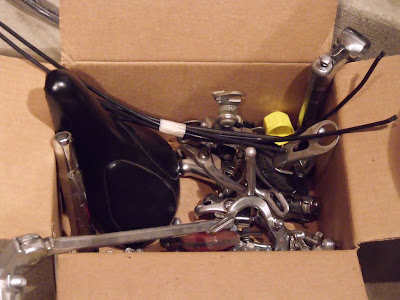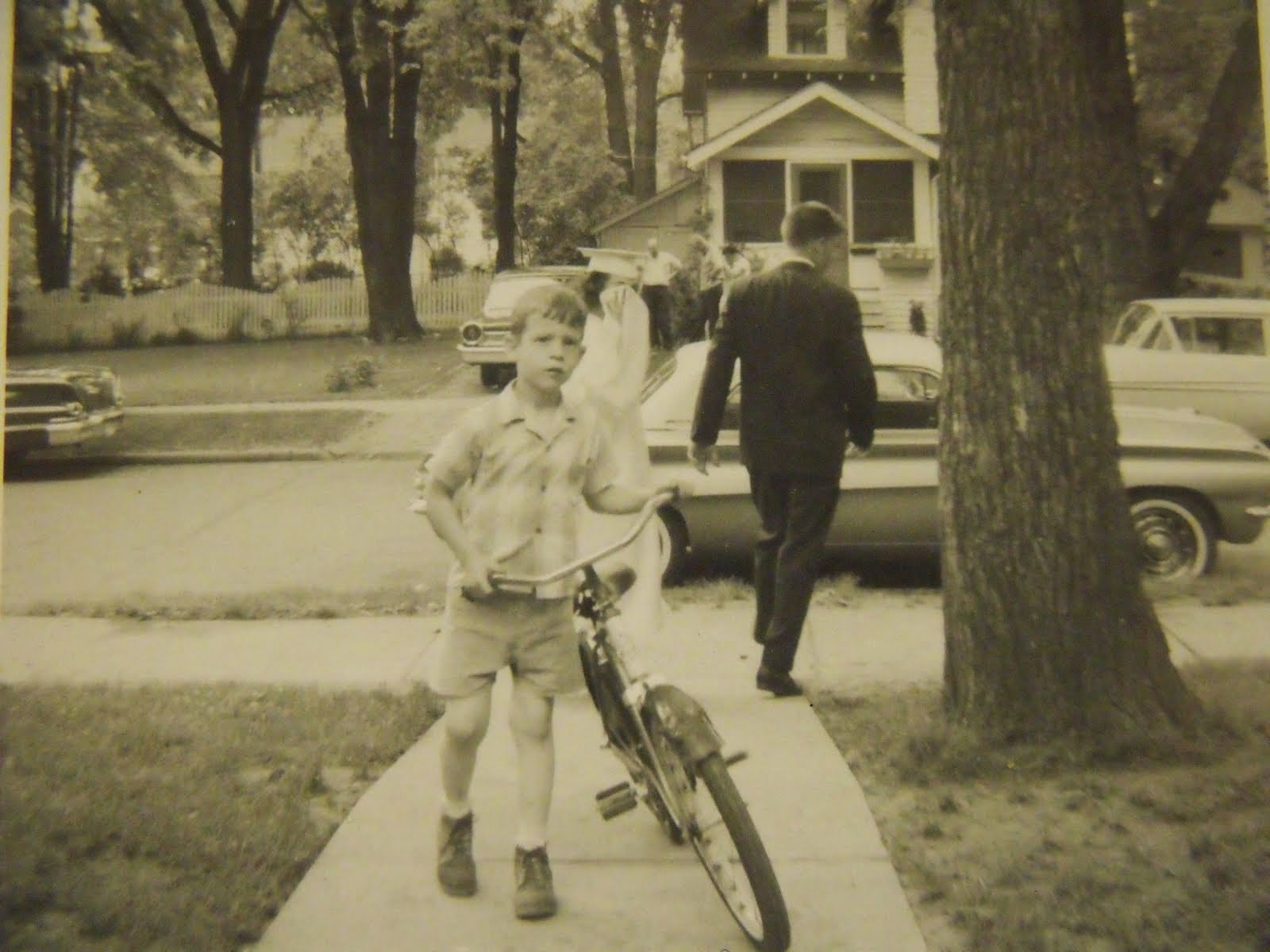
Above: This is a Dia Compe 500 Caliper Brake off the Nishiki Sebring I have been restoring. Other than being "dingy looking" it appears to be well worth refurbishing. You always want to check for cracked or bent parts before refurbishing brakes.
Above: The first thing I like to do is release the spring. I do this by grabbing the end of the spring and moving it over or past the stopper. This takes the tension of the brake. And will help prevent injury or parts being lost. This is particularly important with center pull caliper brakes as they are tightly sprung. NOTE: This method does not work with (double sprung) center-pull brakes. So use EXTREME CAUTION when taking double sprung calipers apart.
This might be the most important thing for a first timer. Only take one caliper apart for cleaning/polishing. This way you can use the still assembled brake as a reference. There are lots of washers and spacers and plastic bushings and it is very easy to forget what went where. If you only have one caliper "fixed gear bike" you might want to take some detail photographs to use as a reference.
Above: The brake caliper (right) shown re assembled with new Jag Wire x Caliper brake Shoes. For me it`s automatic to replace the shoes. Most of the bikes I rebuild or restore have been in storage 10 to 30 years. And even good brake shoes are inexpensive "in bulk" So it`s better to just replace them if you can. I feel the same way about brake and derailleur cables. Good quality cables are also inexpensive in when purchased in bulk. Shown are some of the products I use most often. Note: The detailing brush has fine brass bristles (not steel). Brass is much easier on the metal,chrome, etc. Also you can see the White Lightning Clean Streak used for parts cleaning. And for chrome I use Turtle Wax Chrome Polish and Rust Remover. And the Mother's Mag and Aluminum Polish that I use for Aluminum and Alloy parts polishing. I also use Mother's to clean-out bearing cups. It breaks down the hardened grease rings you often find in bearing cups. I also use Mother's on chain-rings to removed caked-on grease and dirt from the sprockets. As always You want to read the "CAUTIONS" on the products carefully. And use any protective equipment recommended.
Above: I am also restoring the rear wheel off a Miyata and the Rim, Free Wheel, Pie plate and Hub as well. While I feel very strongly about replacing components that should be replaced. I feel just as strongly about refurbishing components that are still very usable. This 6 speed free wheel unit was a mess due to neglect. But after a good cleaning and lube it has many trouble free miles ahead. The free wheel & pie-plate were removed cleaned / polished. The hub and rim were both polished. The spokes were cleaned with a fine brass detail brush and with some light cleaner/de greaser. The axle and bearings were removed de greased and reassembled with fresh grease. And the wheel was trued on the wheel truing stand. As you can see it looks pretty fresh. I`ll never understand why everyone is always so quick to throw stuff away. I guess it is just easier to buy new.
Below: A not so current progress pic of the Nishiki, I will have more soon.
Well that`s it for now (7-31-10) I will be doing some more posts about the Nishiki Sebring real soon. I did repaint the road fork and it came out real good. the bike is pretty much finished. I am waiting for delivery on the "used" correct Sun-Tour ARX front derailleur. And there is some more paint touch up to do as well. And I will be making another attempt at taping the handlebars in the modern correct way. Funny thing, on the instructional video I have been watching about "taping the handle-bars". I just noticed, the finish tape on the already taped side of the bars is unraveling. And I`m talking about the other side of the bars that was just taped before they shot the video. That is by the way a "non issue" when you do it the old way. Not that the new way is not better. I`m just saying...
Till Next Time, Ride safe and remember to always RESCUE,RESTORE&RECYCLE
Cheers,Hugh ATTENTION AMAZON SHOPPERS!! You can help Support This Blog by simply logging onto Amazon dot com using the Amazon Search Box located at the Top Right Corner of This Page. It will not effect your cost and I will receive a small commission. Thanks for your support, Hugh










































